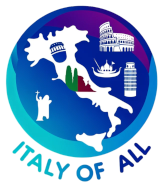The province of Campobasso, located in the Molise region of southern Italy, is characterized by its scenic landscapes, rich history, and deep-rooted cultural traditions. Known for its rolling hills, ancient villages, and pastoral beauty, Campobasso offers a glimpse into traditional Italian life far from the bustle of the country’s tourist-heavy destinations.
Geographically, the province is predominantly mountainous and hilly, with the Apennine mountain range influencing much of its terrain. This landscape is interspersed with important rivers like the Biferno and Trigno, which carve through the terrain, creating fertile valleys that support the province’s agricultural activities. The region’s natural parks and reserves, such as the Matese Regional Park, provide spectacular settings for hiking, skiing, and wildlife observation.
Historically, Campobasso boasts a rich history dating back to the early Middle Ages, with various dominations that have left their mark on the province’s architecture and culture. The capital city, also named Campobasso, is home to the medieval Castello Monforte and the Romanesque Church of San Bartolomeo, both of which testify to the area’s historical depth. Throughout the centuries, Campobasso has remained somewhat secluded, which has helped preserve its traditional ways of life.
Culturally, the province is steeped in traditions that reflect its agrarian roots and the pastoral lifestyles of its inhabitants. Annual festivals, such as the ‘Misteri’ procession in Campobasso, celebrated on the day of Corpus Domini, showcase elaborate costumes and intricate rituals that are unique to the region. These events provide insight into the local folklore and the community’s strong ties to its historical past.
Cuisine in Campobasso is typical of central Italian mountain regions, focusing heavily on hearty, rustic dishes that make use of local ingredients. Specialties include “pampanella” (a spicy, roasted pork dish), “cavatelli” (a type of homemade pasta served with a meat or vegetable sauce), and truffles, which are abundant in the area. The cuisine reflects the simplicity and richness of Molise’s agricultural produce, with olive oil, lamb, and dairy products playing central roles.
Economically, Campobasso’s economy is primarily based on agriculture, with olive growing, winemaking, and sheep farming being particularly important. The province also supports small-scale industries that include craftsmanship in iron and leather, maintaining traditions that have been passed down through generations. Although the area is less industrialized than many other parts of Italy, there is a growing interest in developing tourism as a way to boost the local economy and share the region’s culture and natural beauty with a broader audience.
Despite challenges such as a declining population and the need for more robust economic development, efforts are underway to enhance Campobasso’s appeal as a cultural and eco-tourism destination. Promoting sustainable practices and preserving the unique cultural heritage of the region are key to these efforts.
Overall, the province of Campobasso offers a rich blend of natural beauty, historical intrigue, and cultural depth, making it an integral part of Italy’s diverse landscape. Its ongoing initiatives to preserve its traditions while fostering sustainable growth ensure a vibrant future for its communities.
Comuni in Campobasso Province:
- Bonefro
- Acquaviva Collecroce
- Baranello
- Bojano
- Castelmauro
- Campolieto
- Castelbottaccio
- Campochiaro
- Campobasso
- Campomarino
- Casalciprano
- Busso
- Castropignano
- Castellino del Biferno
- Casacalenda
- Campodipietra
- Ferrazzano
- Civitanova del Sannio
- Cercemaggiore
- Fossalto
- Cercepiccola
- Duronia
- Civitacampomarano
- Colletorto
- Colle d’Anchise
- Macchia Valfortore
- Gildone
- Guardiaregia
- Limosano
- Jelsi
- Guardialfiera
- Lucito
- Matrice
- Larino
- Gambatesa
- Guglionesi
- Montagano
- Monacilioni
- Montenero di Bisaccia
- Montecilfone
- Montefalcone nel Sannio
- Morrone del Sannio
- Mirabello Sannitico
- Montorio nei Frentani
- Molise, CampobassoMoliterno
- Montemitro
- Portocannone
- Petrella Tifernina
- Riccia
- Ripalimosani
- Ripabottoni
- Pietracatella
- Petacciato
- ** Pietracupa
- SalcedoSalcito
- San Biase
- Roccavivara
- Sepino
- San Martino in Pensilis
- Spinete
- Sant’Angelo Limosano
- Sant’Elia a Pianisi
- Santa Croce di Magliano
- San Polo Matese
- San Giuliano di Puglia
- San Giovanni in Galdo
- San Giuliano del Sannio
- San Massimo
- Vinchiaturo
- Teana
- Trivento
- Tavenna
- Torella del Sannio
- Ururi
- Tufara
- Termoli
